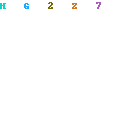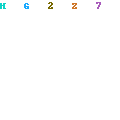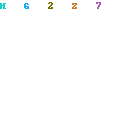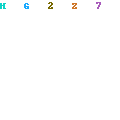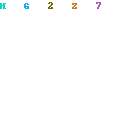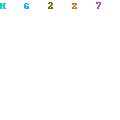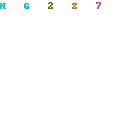Chem TempleChem Temple is in Thuy Phuong village near the southern bank of the Thang Long Bridge. The temple is dedicated to Ly Than, who was sent to assist the first emperor of the Chi'in Dynasty in China and married his daughter during the second century BC. It is believed that the Chem Temple was built around the 7th or 8th century on the site of Ly Than's residence. The current temple today was erected in the 19th century.
The temple contains two gilded wooden statues of Ly Than and his wife sculpted in 1888. It’s a relaxing place, with excellent views of the Red River
Phu Dong TemplePhu Dong Temple is in Gia Lam District, once the home of a tenth-century legendary hero called Thanh Giong. It is located in a peaceful rural area across the Red River to the east of Hanoi city centre. The site actually consists of two temples.
The Dong Temple is large and impressive. According to local legend, it was built by King Ly Thai immediately after the king moved to Thang Long in 1010. It now has two prayer halls, a rear palace and, unusually, a theatre built on the front pond for water puppet shows, all of which were constructed in 19th century.
The Mau Temple was originally built in 1693 on the outer dyke and is dedicated to Thanh Dong's mother. Nearby is an old garden once owned by Thanh Dong's mother. It contains a stele bearing a legend. Apparently, a giant trampled upon the vegetable patch and left a footprint. The next day, Dong's mother placed her foot in the giant print, became pregnant and gave birth to Thanh Dong.
Dong Nhan TempleLocated in central Hanoi, this temple pays homage to the Trung sisters, Trung Trac and Trung Nhi, Vietnamese heroines who led a rebellion to drive out the Han invaders in AD 40.
The Dong Nhan Temple was originally built on the Red River bank in the 12th century, but the bank collapsed in 1819 and the temple was moved to its current location. A local legend tells that one night in early February, two statues were discovered floating in the Red River in 1142 and were brought ashore by villagers. King Ly Anh Tong was told and ordered a temple dedicated to the statues to be built on the spot.
The two statues stand at the rear of the temple and wear hibiscus hats with their hands rising up to their faces attended by twelve statues of female generals on each side.
Thu Le Temple (Kneeling Elephant Temple)The temple derives its name from two kneeling elephants guarding the gate.
Located in Hanoi’s Thu Le botanical garden, this temple was built in the Ly Thai Tong Dynasty (1028-54) near West Lake, and was dedicated to Linh Lang, son of King Ly Thai Tong.
According to legend, the King’s wife was confronted by a dragon, and became pregnant. When the child was born, he had dragon scales and lights twinkling like pearls on his chest. As an adult, he led the army to expel invaders. The grateful king wanted to abdicate in his favour, but Linh Lang refused. He was transformed into a black dragon entangled around a stone slab and disappeared into West Lake. The king ordered a temple to be built on the site.
The Thu Le Temple still contains two bronze statues and a large concave stone slab. It’s in an attractive wooded landscape beside a pond, a calm and harmonious ambiance conducive to contemplation.
Quan Su PagodaThe Quan Su is Hanoi’s largest and most popular pagoda. It was first erected on land in An Tap village close to the southern gate of Thang Long (the old name for Hanoi).
Originally a small Buddhist pagoda located near the 15th century Quan Su house used to receive foreign envoys and ambassadors, the pagoda eventually became the headquarters of the Tonkin Buddhist Association. Over the years, the pagoda has been restored and expanded many times.
Bach Ma (White Horse) Temple in the Old QuarterAccording to legend, in the ninth century, King Ly Thai To was struggling to build the Hanoi Citadel, but the walls kept collapsing because of the marshy sub-soil. Bach Ma (White Horse), who was the spirit of Thang Long, appeared in the guise of a builder and told the King how to create foundations that would support the masonry. The King was grateful, and ordered the building of a pagoda dedicated to Bach Ma. A statue of the horse stands beside the altar.
The current structure was built in the 18th century, and is typical of Hanoi’s pagodas. It’s hidden away in the Old Quarter, and blends in well with its bustling streets. There is even a shop built into the walls to the left of the entrance.
The temple contains two gilded wooden statues of Ly Than and his wife sculpted in 1888. It’s a relaxing place, with excellent views of the Red River
Phu Dong TemplePhu Dong Temple is in Gia Lam District, once the home of a tenth-century legendary hero called Thanh Giong. It is located in a peaceful rural area across the Red River to the east of Hanoi city centre. The site actually consists of two temples.
The Dong Temple is large and impressive. According to local legend, it was built by King Ly Thai immediately after the king moved to Thang Long in 1010. It now has two prayer halls, a rear palace and, unusually, a theatre built on the front pond for water puppet shows, all of which were constructed in 19th century.
The Mau Temple was originally built in 1693 on the outer dyke and is dedicated to Thanh Dong's mother. Nearby is an old garden once owned by Thanh Dong's mother. It contains a stele bearing a legend. Apparently, a giant trampled upon the vegetable patch and left a footprint. The next day, Dong's mother placed her foot in the giant print, became pregnant and gave birth to Thanh Dong.
Dong Nhan TempleLocated in central Hanoi, this temple pays homage to the Trung sisters, Trung Trac and Trung Nhi, Vietnamese heroines who led a rebellion to drive out the Han invaders in AD 40.
The Dong Nhan Temple was originally built on the Red River bank in the 12th century, but the bank collapsed in 1819 and the temple was moved to its current location. A local legend tells that one night in early February, two statues were discovered floating in the Red River in 1142 and were brought ashore by villagers. King Ly Anh Tong was told and ordered a temple dedicated to the statues to be built on the spot.
The two statues stand at the rear of the temple and wear hibiscus hats with their hands rising up to their faces attended by twelve statues of female generals on each side.
Thu Le Temple (Kneeling Elephant Temple)The temple derives its name from two kneeling elephants guarding the gate.
Located in Hanoi’s Thu Le botanical garden, this temple was built in the Ly Thai Tong Dynasty (1028-54) near West Lake, and was dedicated to Linh Lang, son of King Ly Thai Tong.
According to legend, the King’s wife was confronted by a dragon, and became pregnant. When the child was born, he had dragon scales and lights twinkling like pearls on his chest. As an adult, he led the army to expel invaders. The grateful king wanted to abdicate in his favour, but Linh Lang refused. He was transformed into a black dragon entangled around a stone slab and disappeared into West Lake. The king ordered a temple to be built on the site.
The Thu Le Temple still contains two bronze statues and a large concave stone slab. It’s in an attractive wooded landscape beside a pond, a calm and harmonious ambiance conducive to contemplation.
Quan Su PagodaThe Quan Su is Hanoi’s largest and most popular pagoda. It was first erected on land in An Tap village close to the southern gate of Thang Long (the old name for Hanoi).
Originally a small Buddhist pagoda located near the 15th century Quan Su house used to receive foreign envoys and ambassadors, the pagoda eventually became the headquarters of the Tonkin Buddhist Association. Over the years, the pagoda has been restored and expanded many times.
Bach Ma (White Horse) Temple in the Old QuarterAccording to legend, in the ninth century, King Ly Thai To was struggling to build the Hanoi Citadel, but the walls kept collapsing because of the marshy sub-soil. Bach Ma (White Horse), who was the spirit of Thang Long, appeared in the guise of a builder and told the King how to create foundations that would support the masonry. The King was grateful, and ordered the building of a pagoda dedicated to Bach Ma. A statue of the horse stands beside the altar.
The current structure was built in the 18th century, and is typical of Hanoi’s pagodas. It’s hidden away in the Old Quarter, and blends in well with its bustling streets. There is even a shop built into the walls to the left of the entrance.
